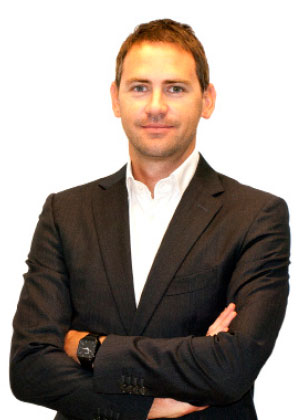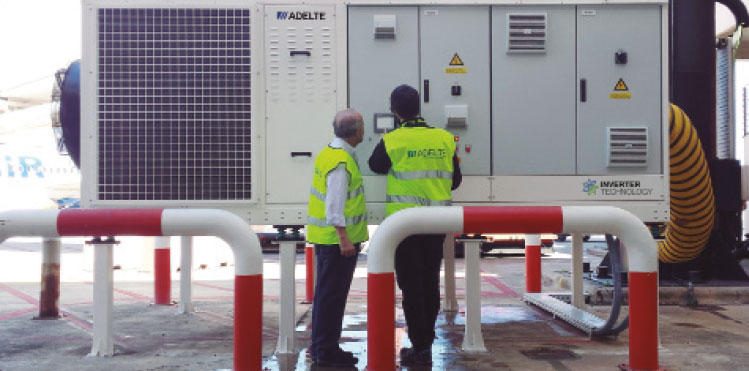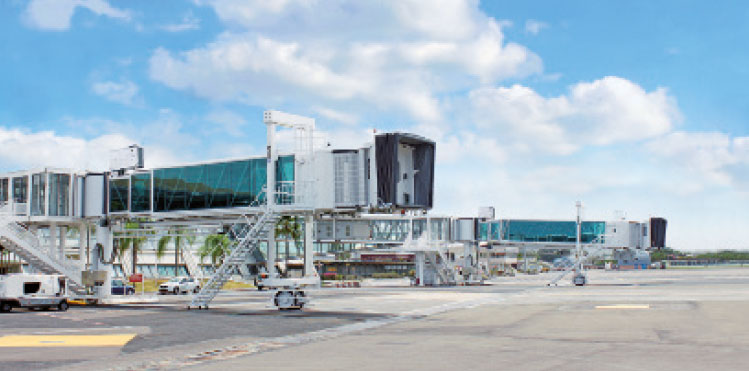François Mamert, Marketing Director, ADELTE, interviewed by Ross Falconer.

François Mamert, Marketing Director, ADELTE: “Multiple sensors, point-and-go technology, and an automated docking system, make docking operations simple and successful, preventing any risk to the aircraft or operators on the apron.”
Today’s passenger boarding bridges (PBBs) are designed with maximum flexibility in mind, allowing airports to serve a wide range of aircraft, which can be an important factor in handling increasing traffic.
There have been many interesting developments, especially in automation, structure design, energy consumption and IT. “Docking manoeuvres are fast, precise and secure,” explains François Mamert, Marketing Director, ADELTE. “Multiple sensors, point-and-go technology, and an automated docking system, make docking operations simple and successful, preventing any risk to the aircraft or operators on the apron.”
He adds that automation of the docking process is a great improvement. “The operator can enter in the system the reference of the aircraft arriving at the gate and the PBB will pre-position itself automatically,” says Mamert. “Once the PBB is a few metres from the door of the plane, the operator takes manual control of the manoeuvre until the door of the plane is opened. The PBB will then automatically adjust – we call this ‘automatic levelling’ – to the changes in door height during turnaround operation as the plane moves up or down when passengers embark/disembark and luggage is loaded/unloaded.”
The structure of the PBBs has also been optimised according to the service loads and ground service equipment (GSE) integration. Together with more efficient engines, it provides a more efficient PBB with reduced energy consumption. “Energy consumption is a very important factor to take into account,” Mamert comments. “This is one of the reasons why a new generation of PCA, designed around full inverter technology, is arriving on the market.”
Pre-conditioned air units
Globally, the demand for pre-conditioned air units is increasing in most markets. “We are proud to list customers from as far away as Seoul in South Korea to Europe, the Middle East and Latin America,” says Mamert. “The context is favourable for the consolidation of the demand for PCAs using inverter technology.”
The purpose of a PCA, of course, is to improve the passenger experience, providing an efficient, flexible and reliable way to deliver high quality pre-conditioned air for cooling or heating to a variety of stationed aircraft. “When it comes to deciding the characteristics of the PCAs to install at an airport, the main criteria to take into account are the type and size of aircraft operating at the airport and the location’s climatic conditions,” Mamert adds. “This refers not only to the temperature of ambient air, but also to its relative humidity.”

ADELTE’s Full Inverter technology is said to be capable of improving efficiency of up to 35% using two inverter compressors. Aena is the first airport operator to have purchased the technology, with ADELTE recently installing 20 units at Palma de Mallorca Airport.
The most commonly used PCAs at airports today have a rather binary operating system – essentially on/off. This means that the system is always operating at 100% capacity regardless of the actual aircraft needs relating to passenger load and outside air temperature. The result is a significant waste of energy.
“ADELTE developed a new technology, called Full Inverter, offering full regulation of the PCA’s capacity using specific compressors four phases and high quality direct drive centrifugal blower (VFD),” Mamert explains. “This enables us to make a fine and constant regulation in coherence with the aircraft’s cabin temperature needs.”
This innovative technology is said to be capable of improving efficiency of up to 35% using two inverter compressors. Aena is the first airport operator to have purchased the technology, with ADELTE recently installing 20 units at Palma de Mallorca Airport.
“Even more dramatic is the reduction of electrical energy when operating in cooling mode,” Mamert adds. “The ADELTE Inverter will then operate as a heat pump, mining energy from the ambient air to produce the required heat.”

There have been many interesting developments in passenger boarding bridges, especially in automation, structure design, energy consumption and IT. “Multiple sensors, point-and-go technology, and an automated docking system, make docking operations simple and successful, preventing any risk to the aircraft or operators on the apron,” explains François Mamert, Marketing Director, ADELTE.
Meanwhile, more and more airports require an advanced system – IASS (Integrated Aircraft Stand System). The IASS provides better integration between the PBB and other GSE such as VDGS (Visual Docking Guidance System), PCA, GPU and Water Cabinets, and allows the airport to monitor power consumption, incidents, the number of service hours of each equipment, etc. – useful information in order to have a global understanding of gate equipment operation.
“Also with the aim of improving the performance of the PBBs, and to support our clients in the operation of our equipment, we have developed Webgate, an IT feature which allows us, as manufacturer, to connect remotely to the HMI (Human Machine Interface) of the PBB and to see the exact same data as the on-site operator,” Mamert adds. “It is especially useful for resolving any doubt or issue more quickly.”
Globally, the demand for both passenger boarding bridges and pre-conditioned air units is increasing, supported by the increase in traffic, the renewal and upgrading of old equipment, the extension of existing terminals, and the construction of new airports.
“Of course, as a company, to design, manufacture, install, maintain and operate PCA units, as well as passenger boarding bridges is a real advantage. Our design teams benefit from direct feedback from our onsite operating or maintenance teams. It allows us to be very proactive in the development of new solutions, testing and finally improving our products to offer our clients the most advanced, efficient and reliable equipment,” Mamert concludes.







